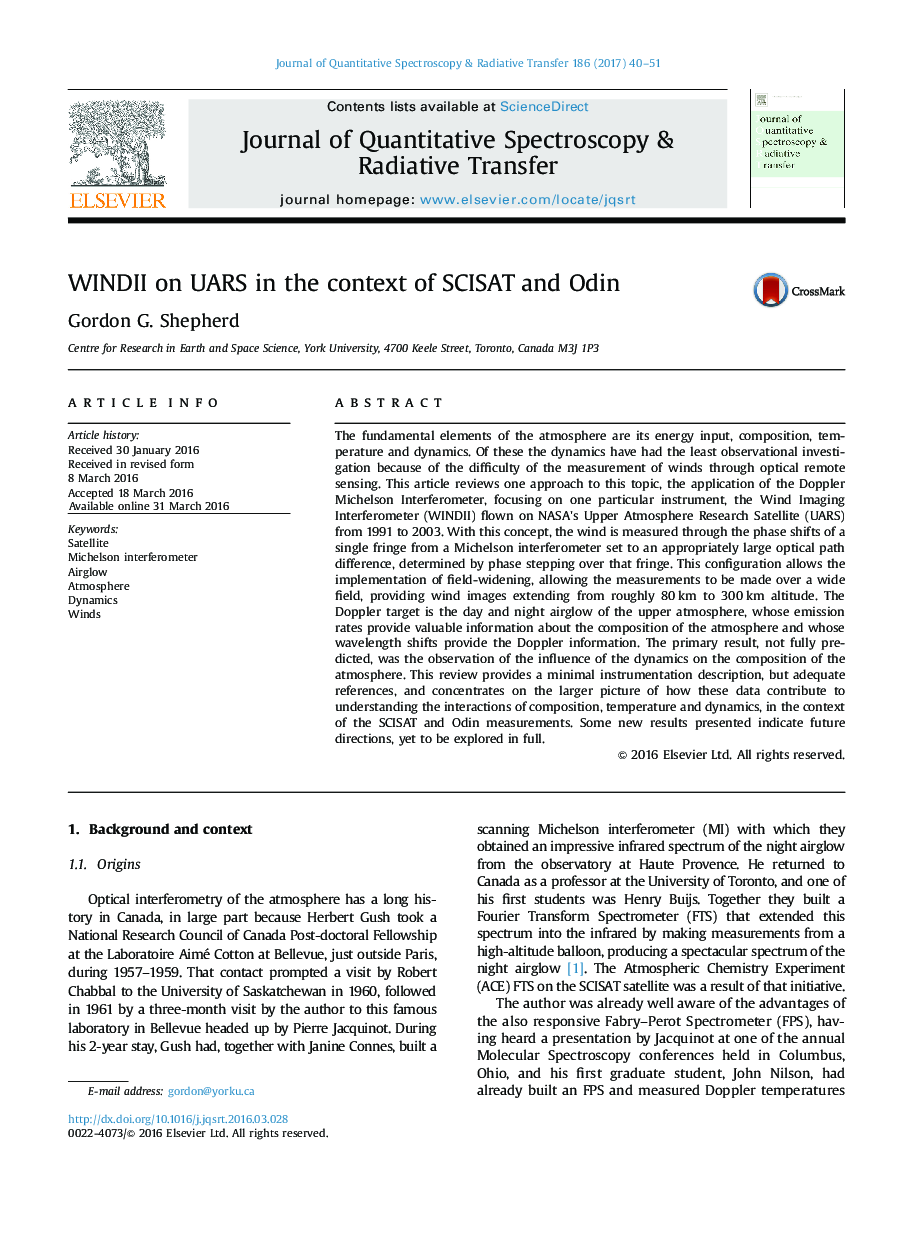| Article ID | Journal | Published Year | Pages | File Type |
|---|---|---|---|---|
| 5427485 | Journal of Quantitative Spectroscopy and Radiative Transfer | 2017 | 12 Pages |
â¢The Doppler Michelson Interferometer offers a powerful method of wind measurement.â¢It can be field-widened which allows imaging and increases responsivity.â¢Using airglow as a Doppler target allows the determination of species concentrations.â¢It is found that the dynamics has a major influence on atmospheric composition.
The fundamental elements of the atmosphere are its energy input, composition, temperature and dynamics. Of these the dynamics have had the least observational investigation because of the difficulty of the measurement of winds through optical remote sensing. This article reviews one approach to this topic, the application of the Doppler Michelson Interferometer, focusing on one particular instrument, the Wind Imaging Interferometer (WINDII) flown on NASA׳s Upper Atmosphere Research Satellite (UARS) from 1991 to 2003. With this concept, the wind is measured through the phase shifts of a single fringe from a Michelson interferometer set to an appropriately large optical path difference, determined by phase stepping over that fringe. This configuration allows the implementation of field-widening, allowing the measurements to be made over a wide field, providing wind images extending from roughly 80 km to 300 km altitude. The Doppler target is the day and night airglow of the upper atmosphere, whose emission rates provide valuable information about the composition of the atmosphere and whose wavelength shifts provide the Doppler information. The primary result, not fully predicted, was the observation of the influence of the dynamics on the composition of the atmosphere. This review provides a minimal instrumentation description, but adequate references, and concentrates on the larger picture of how these data contribute to understanding the interactions of composition, temperature and dynamics, in the context of the SCISAT and Odin measurements. Some new results presented indicate future directions, yet to be explored in full.
